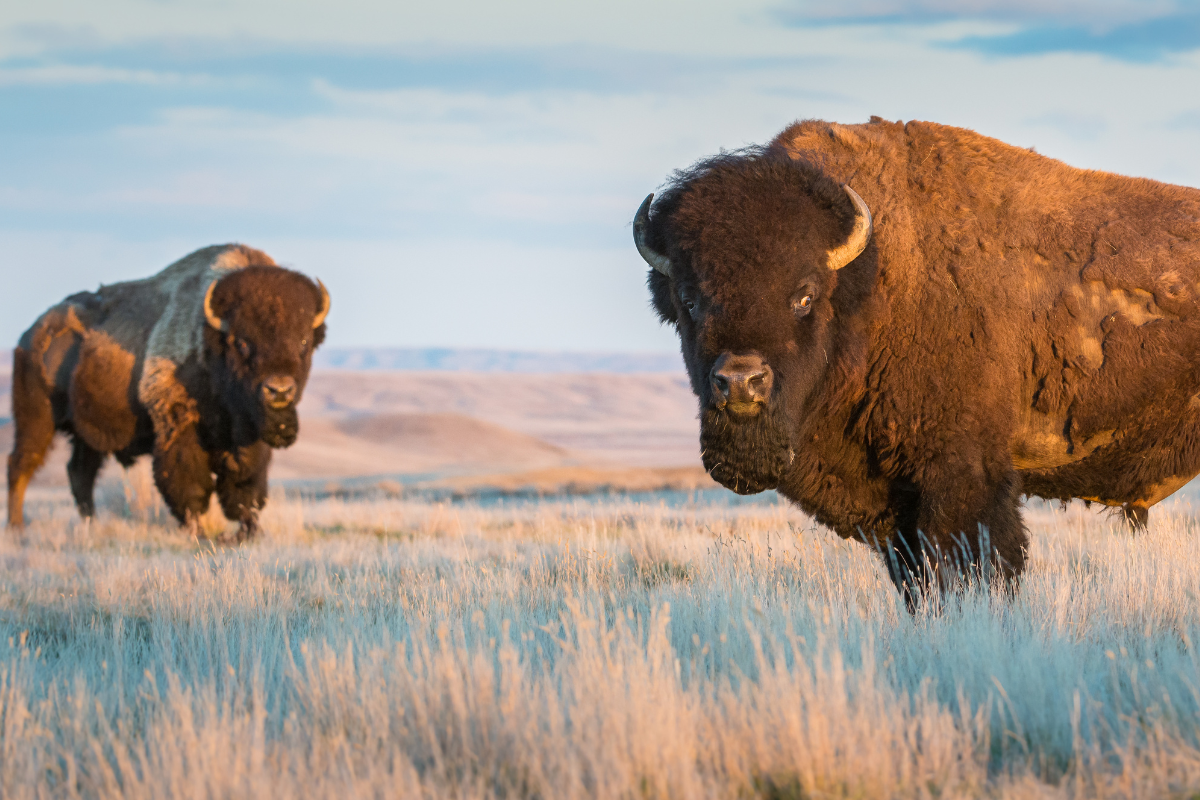By Jennifer Best
Every winter on the high plateau of Yellowstone National Park, snow and ice cover the forage that Yellowstone’s wild bison depend on, so hunger and the timeless quest for survival push them to lower elevations beyond park boundaries. When they cross these arbitrary lines, they enter a war zone with ranchers, state and federal agencies, tribal interests and private trophy hunters.
Over the past four months of a particularly harsh season, a record-breaking 1,530 wild bison from Yellowstone National Park’s herds of 6,000 have been killed, captured, or quarantined. This includes “hundreds of pregnant females that would have soon been giving birth,” reports Jim Robbins, in a gut-wrenching New York Times account of this year’s ongoing massacre. “Hundreds more were sent out of the park—some to slaughterhouses and about 285 to a quarantine site where they will be held to determine if they are disease-free.”
This year’s egregious assault on bison underscores the importance of efforts by Friends of Animals, Buffalo Field Campaign and Western Watershed Projects to get Yellowstone’s bison listed under the Endangered Species Act so their lives will be protected beyond the boundaries of the national park.
For years, the U.S. Fish and Wildlife Service has disregarded credible scientific evidence showing that the current management and slaughter of bison is putting the population at risk of extinction. FWS previously issued two negative 90-day findings, which FoA and its allies challenged in court twice and won.
In June 2022, the FWS made a preliminary finding that the legal petitions have presented “substantial, credible information indicating that a listing action may be warranted.” The agency has one year to make its decision whether to list them, and until then the public can weigh in. You can submit comment here.
Killing field
State and federal agencies have allowed the killing of bison in and around Yellowstone National Park since 2000 as part of the Interagency Bison Management Plan, which is heavily influenced by Montana livestock interests. They claim the massive cull is part of a strategy to prevent bison from getting near livestock, based in large part on unfounded concerns that domestic cattle could be infected with brucellosis, which causes cows to abort their calves. Although bison can be carriers of the disease, there are no known reports of Yellowstone bison infecting Montana cattle with brucellosis. Not to mention that cattle can be vaccinated against and tested for brucellosis, further reducing the risk of infection or spread.
It is unacceptable that nearly a quarter of all of the last remaining wild bison could be killed because of the economic interests of a few in the livestock industry. Their natural migration through what biologists refer to as the Greater Yellowstone Ecosystem is one of the traits that makes them wild and separates them from domestic cattle. It is also necessary for the survival of the species, especially as the climate crisis causes extreme weather events to become more common. Every time there is one of these mass killings it disrupts the species’ social structure. It also makes the population more vulnerable to extinction by reducing the herds’ genetic diversity.
The wild bison of the Yellowstone ecosystem make up the world’s most important bison population. They are the last continuously wild, migratory bison to exist on their native range since prehistoric times. Wild bison are a keystone species that can help restore grasslands, sagebrush steppes, and prairie habitats.
There is scientific evidence that there are two separate and genetically distinct herds of bison in Yellowstone National Park—the Central Herd and Northern Herd—which makes them geographically distinct sub-sects of all Plains bison. The current Interagency plan treats Yellowstone bison as a single herd, failing to provide safeguards to maintain both herds as distinct and isolated populations, argues FoA’s Wildlife Law Program.
The Bison Conservation Transfer Program, which allows Yellowstone to divert bison who have passed quarantine to indigenous tribes, does not address a key aspect of the problem—that Yellowstone bison need additional habitat and should not be massacred during their natural migrations outside the Park’s boundaries.
Many of the bison, with little fear of people, have been killed as they navigate a narrow area known as Beattie Gulch, to travel beyond the park’s northern border. “The killing field is across the street from my driveway entrance,” Bonnie Lynn, founder of Yellowstone Voices, which campaigns against the hunt, told NYT’s Robbins.
“Imagine the mindset that would allow the mass killing of the American bald eagle, our national bird. There would be nationwide outrage, not to mention prosecutions,” said Priscilla Feral, president of Friends of Animals. “So why do we continue to tolerate the annual slaughter of nearly a quarter of the last surviving wild bison, our national mammal? Yellowstone’s bison are under siege and deserve full protection under the Endangered Species Act.”
Jennifer Best is director of Friends of Animals Wildlife Law Program, based in Centennial, CO. Best received a B.A. from Lewis & Clark College and earned her J.D. from University of Denver Sturm College of Law with a Certificate in Environmental and Natural Resource Law.

